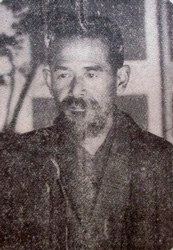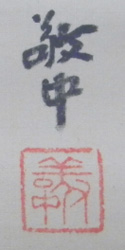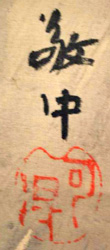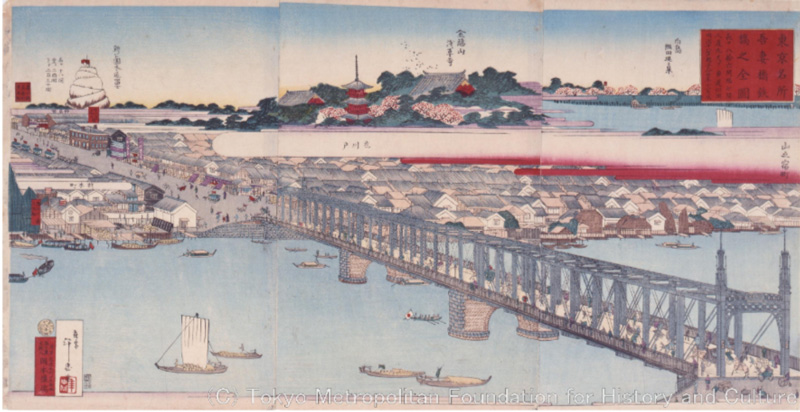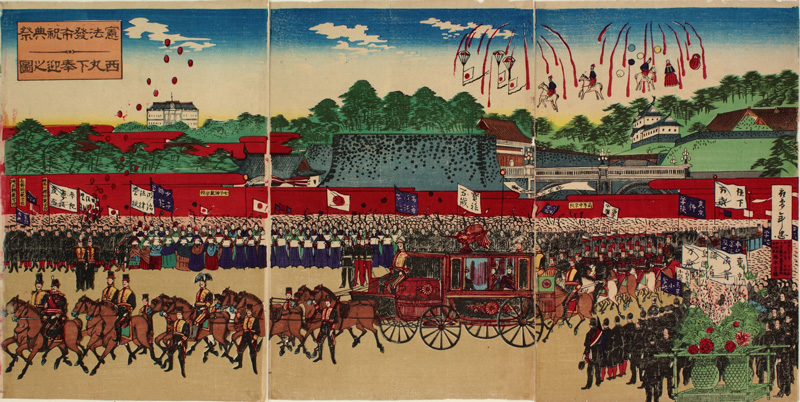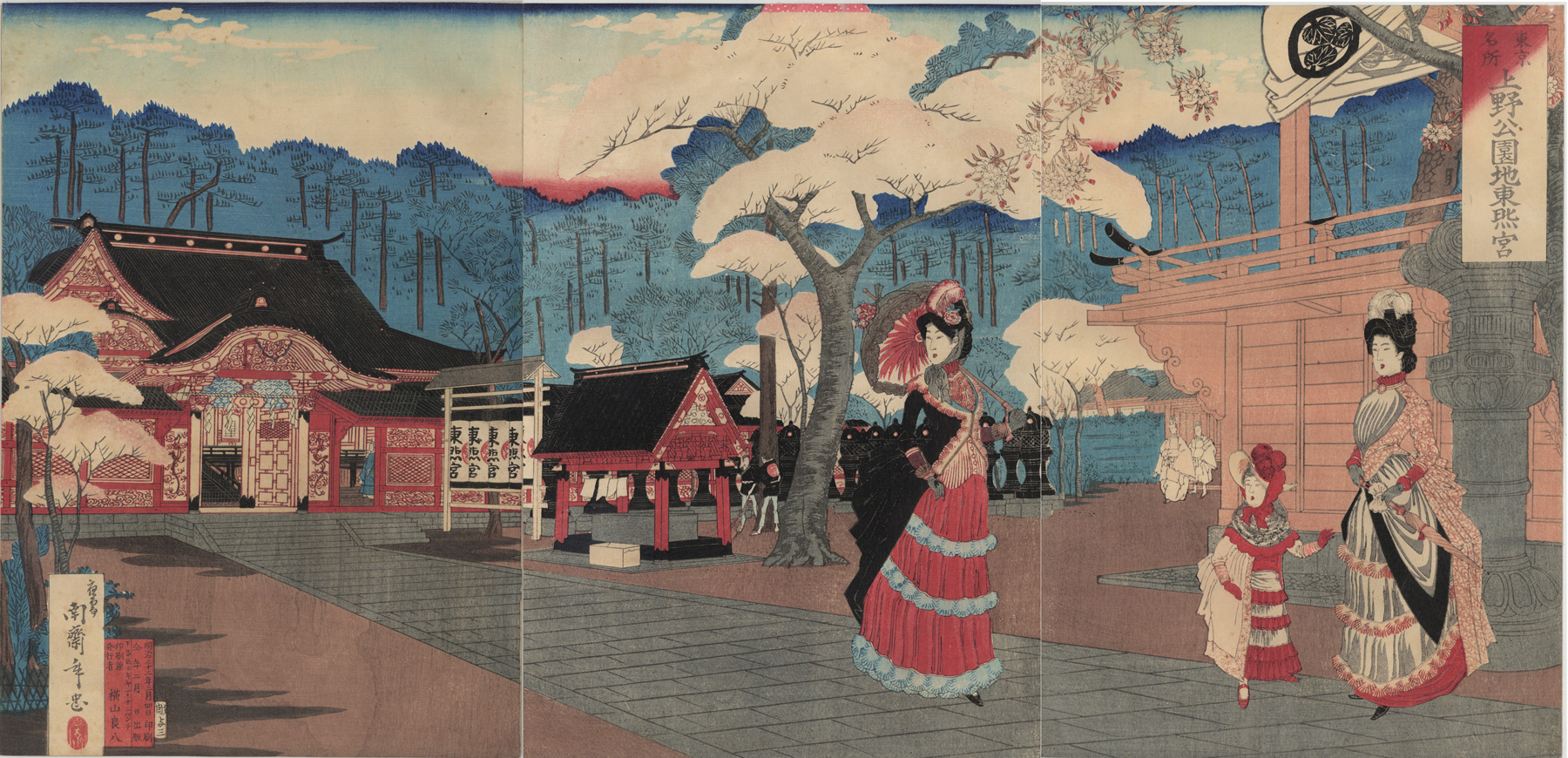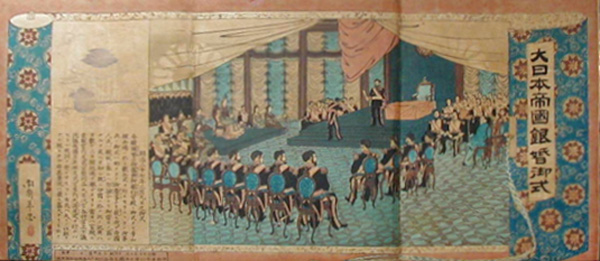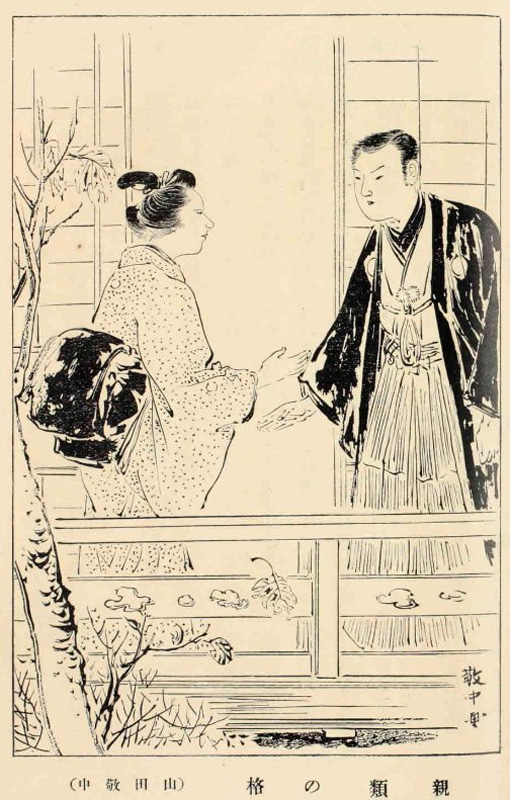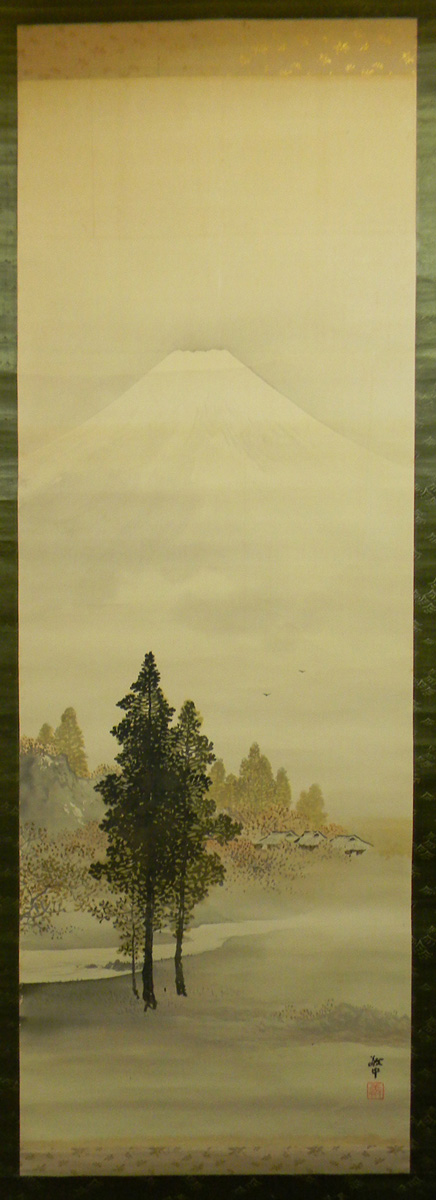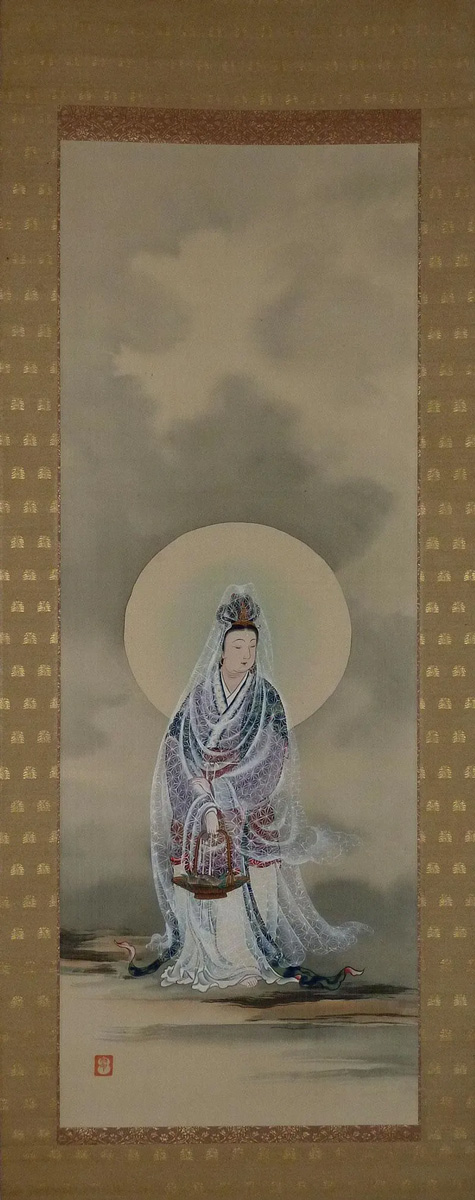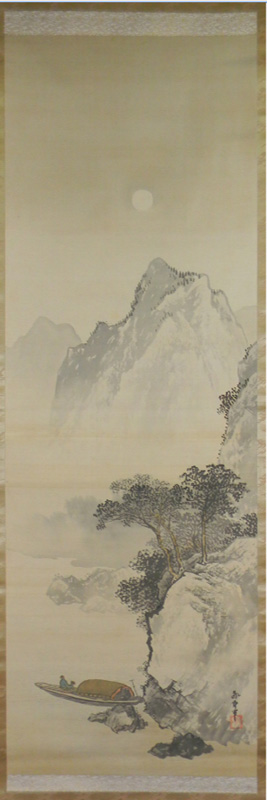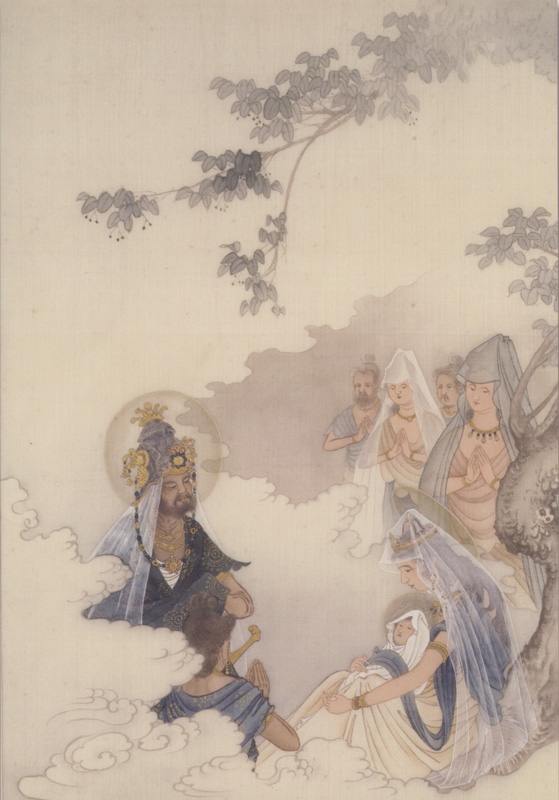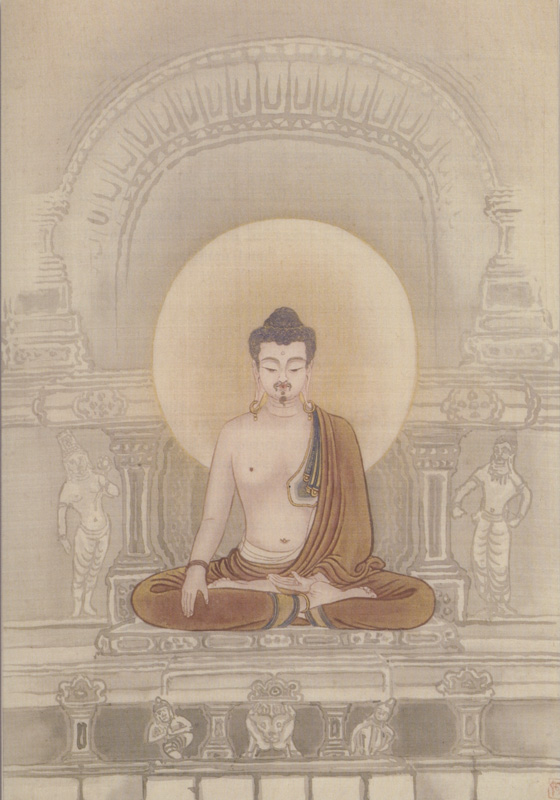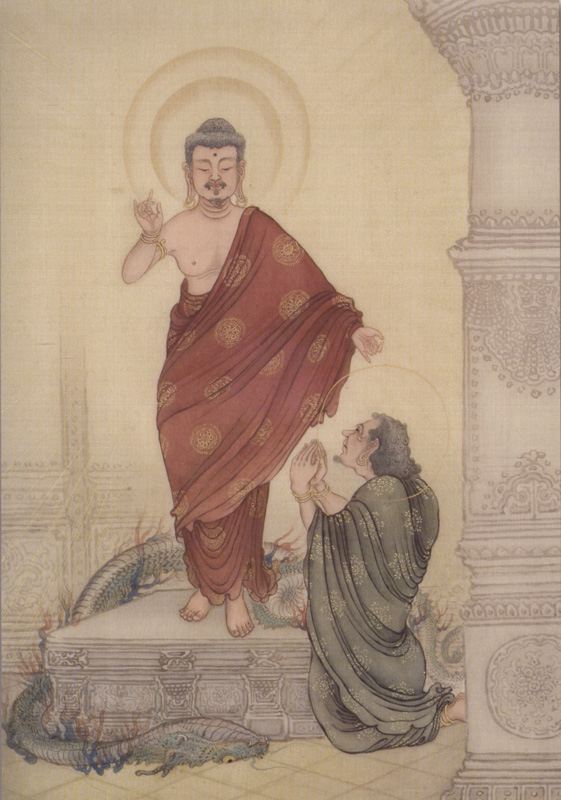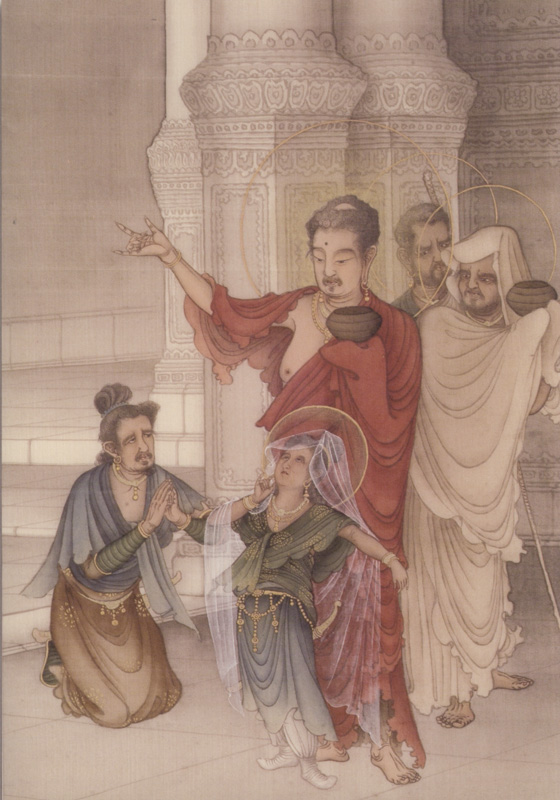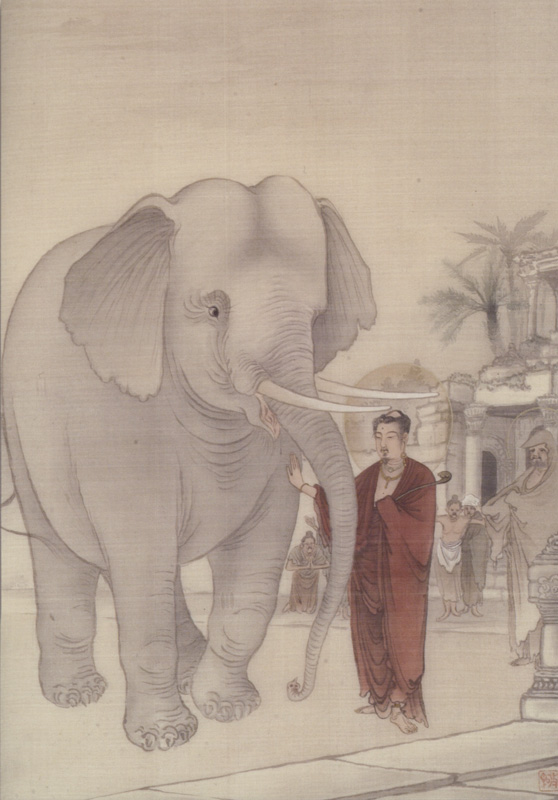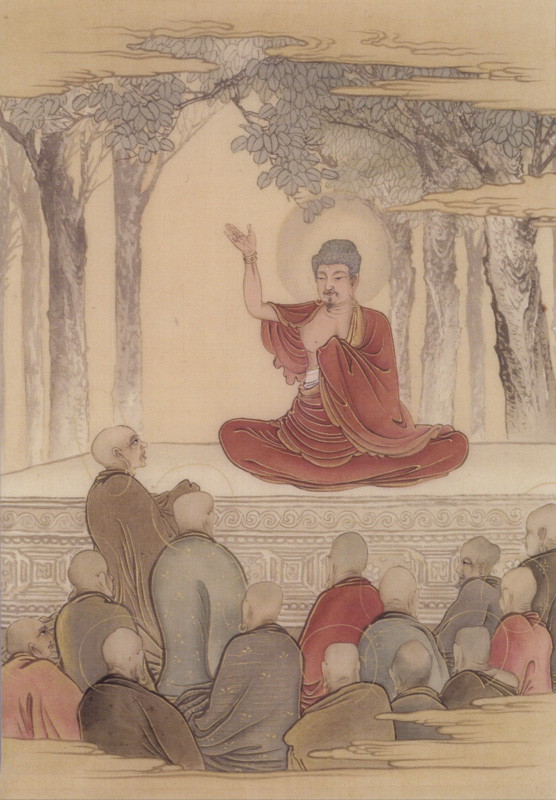Biographical Data Biography Sources: Japan wikipedia https://ja.wikipedia.org/wiki/山田年忠; List of Modern Japanese Print Artists (1900-1945) [近代日本版画家名覧(1900-1945)] http://www.hanga-do.com/img/Hangadomeiran126.pdf, p. 68; Independent Administrative Institution Nation Institutes for Cultural Heritage https://www.tobunken.go.jp/materials/gahou/109394.html; Woodblock Kuchi-e Prints: Reflections of Meiji Culture, Helen Merritt and Nanako Yamada, University of Hawaii Press, 2000, p. 111-112; A Dictionary of Japanese Artists: Painting, Sculpture, Ceramics, Prints, Lacquer, Laurance P. Roberts, Weatherhill, 1976, p. 195. undated photo of artist | Yamada Toshitada 山田年忠 (1868-1934)
Whileinitially a student of the famous ukiyo-e print artist Tsukioka Yoshitoshi (1839-1892), heis best known as a Japanese-style (nihonga) painter, using the artist name of Yamada Keichū 山田敬中. He created relatively few ukiyo-e designs during his career, most of his work being paintings.
In addition to the artist name (gō) Toshitada 年忠, bestowed on him byYoshitoshi, the signatures Nanshi Toshitada 南志年忠, Nansai Toshitada 南斎年忠 and Shimane Toshitada 島根年忠 appear on his ukiyo-e prints. Other gō associated with the artist are Katoku 可得 and Toshinaka 年中. Born in Asakusa, Tokyo on April 2, 1868 his birth name was Shimane Chūzō 島根忠蔵. After graduating from Terabe Elementary School in 1881 he studied haiku and the Chinese classics until, at age of eighteen, he came under the tutelage of Yoshitoshi, mentor to several hundred artists over his career. Yamada was not a prolific print artist if his
extant prints shown on the web are an accurate gauge, but he created at least six triptychs from early 1887 into 1894, which are shown below. |
Famous Places of Tokyo: Panoramic View of Azumabashi Bridge Made of Iron, December 1887 東京名所 吾妻橋鉄橋之全圖 source: Edo-Tokyo Museum 87102101 | Illustration of the Celebration of the Constitution,
February, 1887
憲法発布祝典祭西丸下奉迎之図
source: Waseda University Library チ05_04120
|
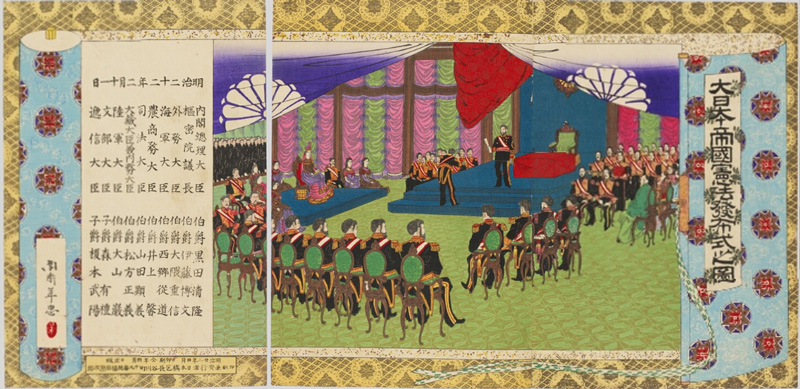 Great Japan Imperial Constitution Promulgation Ceremony, Great Japan Imperial Constitution Promulgation Ceremony,February 1887 大日本帝国憲法発布式之図 source: Digital Collections of Keio University Libraries | Scenic View of Tokyo, Ueno Park Tōshō-gū Shrine,
February 1889
東京名所 上野公園地東照宮
source: The Lavenberg Collection of Japanese Prints |
Cherry Blossom Viewing at the Sumida Bank, Mukojima, April 1889 向島隅田堤観桜之図 source: Edo-Tokyo Museum 87102101 | Imperial Silver Wedding Anniversary, 1894
大日本帝國銀婚御式 |
It is unknown exactly how long Yamada studied with Yoshitoshi and whether he was still in Yoshitoshi's studio when in 1889 he won a prize at the Japan Youth Painting Promotion Society Exhibition 日本美術協会青年絵画共進会 for his painting 年の市図 (Picture of the Year End Fair.)
In 1890 he worked for a short time as an illustrator for the Edo shinbun (The Edo Newspaper) and Edokai zasshi (Journal of the Edo Society) and in the late 1890s he designed a few kuchi-e (book illustrations), using the gō Keichū, examples of which appears below. The few kuchi-e he designed, along with at least one surimono print in the collection of the British Museum and the woodblock prints shown above, may be the bulk of his print work.
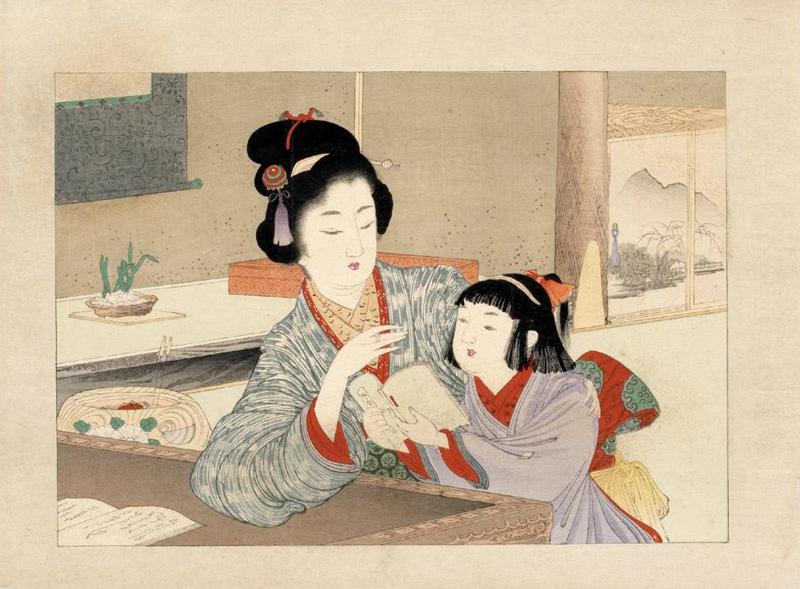 Mother and daughter reading, 1897 appearing in Bungei kurabu dai 3-kan, dai 12-hen
| Illustration titled 親類の格 from the novel Tajō Takon (Passions and Regrets) by Ozaki Kōyō, 1897 |
In 1891 he became a student of Kawabata Gyokushō (1848-1913), a Maruyama-Shijō school painter at the Tokyo School of Fine Arts (Tokyo Bijutsu Gakkō). In that same year, he participated along with a number of other young artists in forming, under the leadership of Okakura Tenshin (1863-1913), the scholar and founder of the Tokyo School of Fine Arts, the Japan Youth Painting Association (Nihon Seinen Kaiga Kyōkai). It is said that Okakura encouraged his career and Yamada was to go on to become a teacher at the Tokyo School of Fine Arts. Yamada would also go on to teach at the Kawabata Art School, founded by Kawabata after he left the Tokyo School of Fine Arts.
In 1896 Yamada joined the Japan Painting Association (Nihon Kaiga Ky ōkai 日本絵画協会), formed by students of Okakaura, and in the following year was awarded a silver medal in their second competitive exhibition. It is reported that he took part in the founding of Okakura's Nihon Bijutsuin (Japan Art Institute) in 1898 and in that same year, at Okakura’s urging, he took the position of principal at Kanazawa Prefectural Technical School (now Ishikawa Prefectural Industrial High School) over 250 miles from Tokyo. He would remain there for nearly ten years, returning to Tokyo in 1907. During his time he continued to submit works to Tokyo exhibitions, although being over 250 miles from the artistic center of Tokyo was isolating and may have caused a falling out with Okakura.
| Mount Fuji, date unknown signed and sealed Keichū ink on silk | Gyoran Kannon (the “fish basket bodhisattva”), date unknown, sealed Keichū ink on silk | Landscape, Moonlit Night 水墨月夜山水図 date unknown, signed and sealed Keichū ink on silk |
Among his students were his son Yamada Shingo 山田申吾 (1908-1977), his son-in-law Eizō Katō 加藤栄三 (1906-1972), Takahashi Keibi (Keimi) 高橋敬美 (1892-1978and Tamai Keisen 玉井敬泉 (1889-1960). Yamada passed away at the age of 67 in 1934.
Paintings for "The Gospel of Buddha"sources: A Storied Sage: Canon and Creation in the Making of a Japanese Buddha, Micah L. Auerback, University of Chicago Press, p. 207; The Gospel of Buddha: According to Old Records, Paul Caras, Open Court, 2004, p. xi-xii.
Around the age of 30, Yamada undertook a large cannon of work creating over 35 paintings on the life of Buddha for possible reproduction in Paul Carus’s book The Gospel of Buddha, first published in 1894. While the paintings were not used in the original publication, at Paul Carus’s request, the Art Institute of Chicago exhibited thirty-three of Yamada’s paintings in September 1899 and in 2004, Carus's grandson, Blouke Caras, included twenty-seven of the paintings in the 8th edition of the book, six of which are shown below along with the titles shown in the book.
The fascinating story of how these paintings were re-discovered in 2001 in La Salle, Illinois, appearing in the April 20, 2006 issue of The Chicago Reader, can be found as an attachment at the bottom of this page.
Brahma worshiping the Buddha child | Enlightenment | Conquering the dragon |
Rahula
| The Wild elephant
| The Buddha's farewell address |
Signature and Seals
Signatures appearing on prints 應需 南斎年忠 / ? ōju Nansai Toshitada / unread | 南斎年忠 / ? Nansai Toshitada / unread | 應需 年忠画 / 年忠 ōju Toshitada / Toshidada | 南斎年忠 Nansai Toshitada | |
signatures appearing on paintings
敬中 / ? Keichū / unread |
敬中 / 敬中 Keichū / Keichū |
敬中筆 / 敬中
Keichū hitsu / Keichū |
敬中筆 / ? Keichū hitsu / unread | | 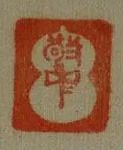 敬中 Keichū |
last update:1/21/2020 created Irwin Lavenberg, Jan 21, 2020, 3:15 PM v.1 |
